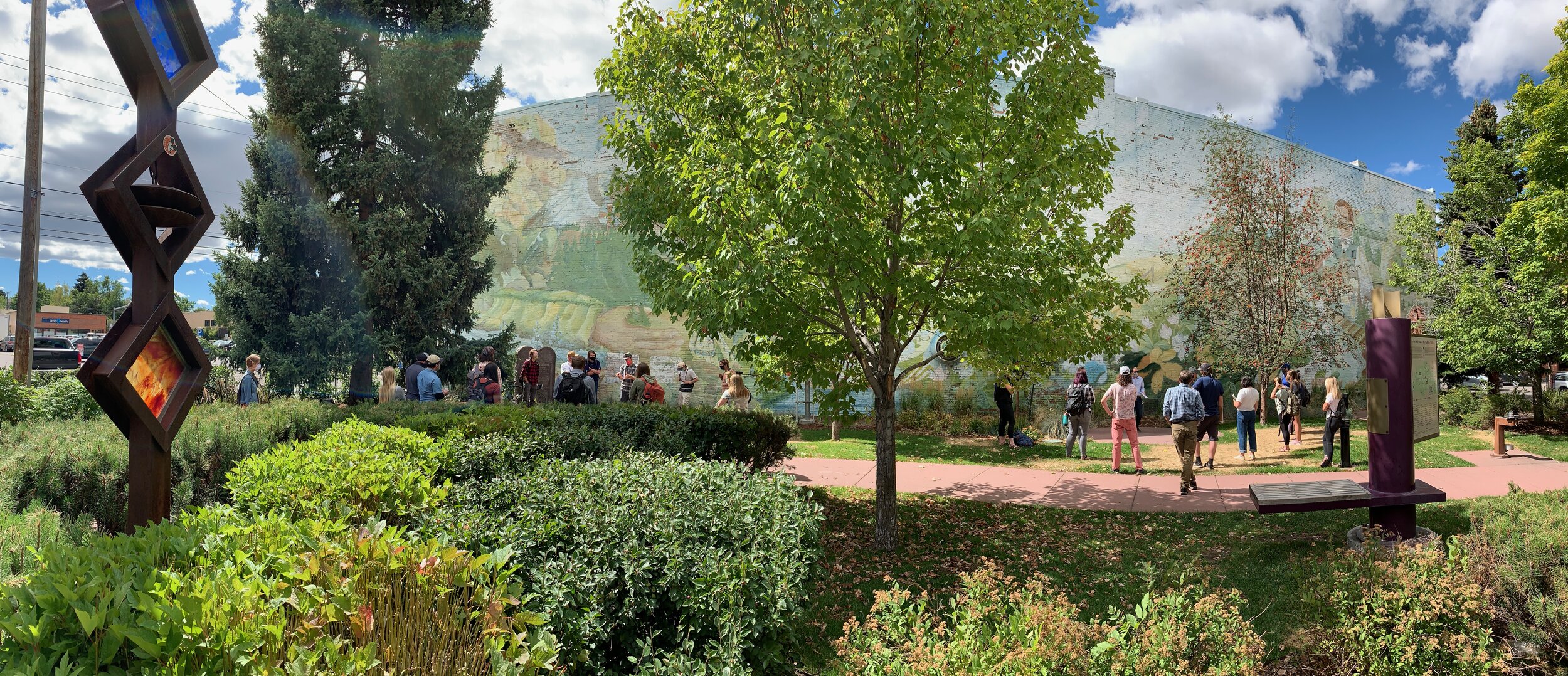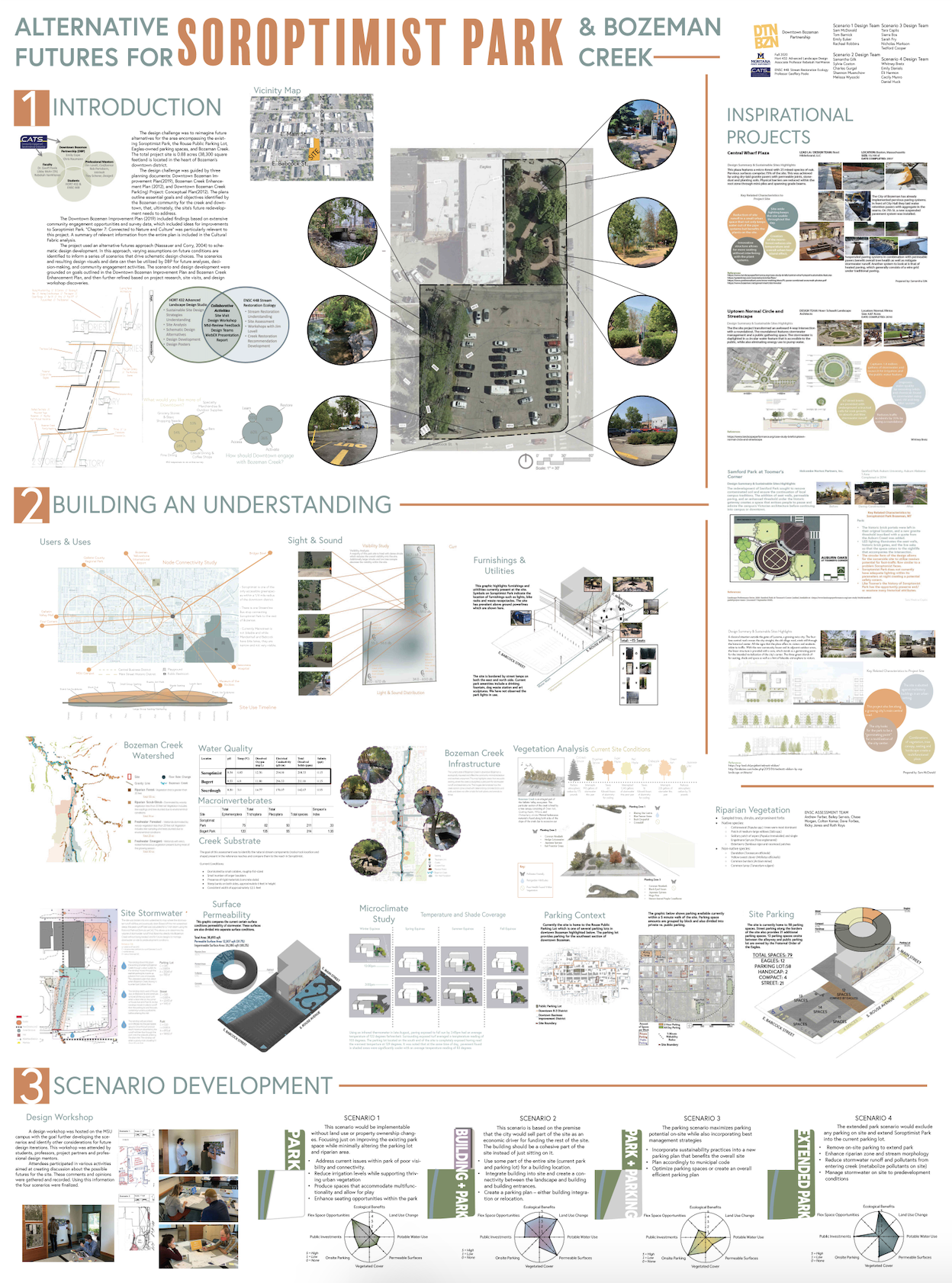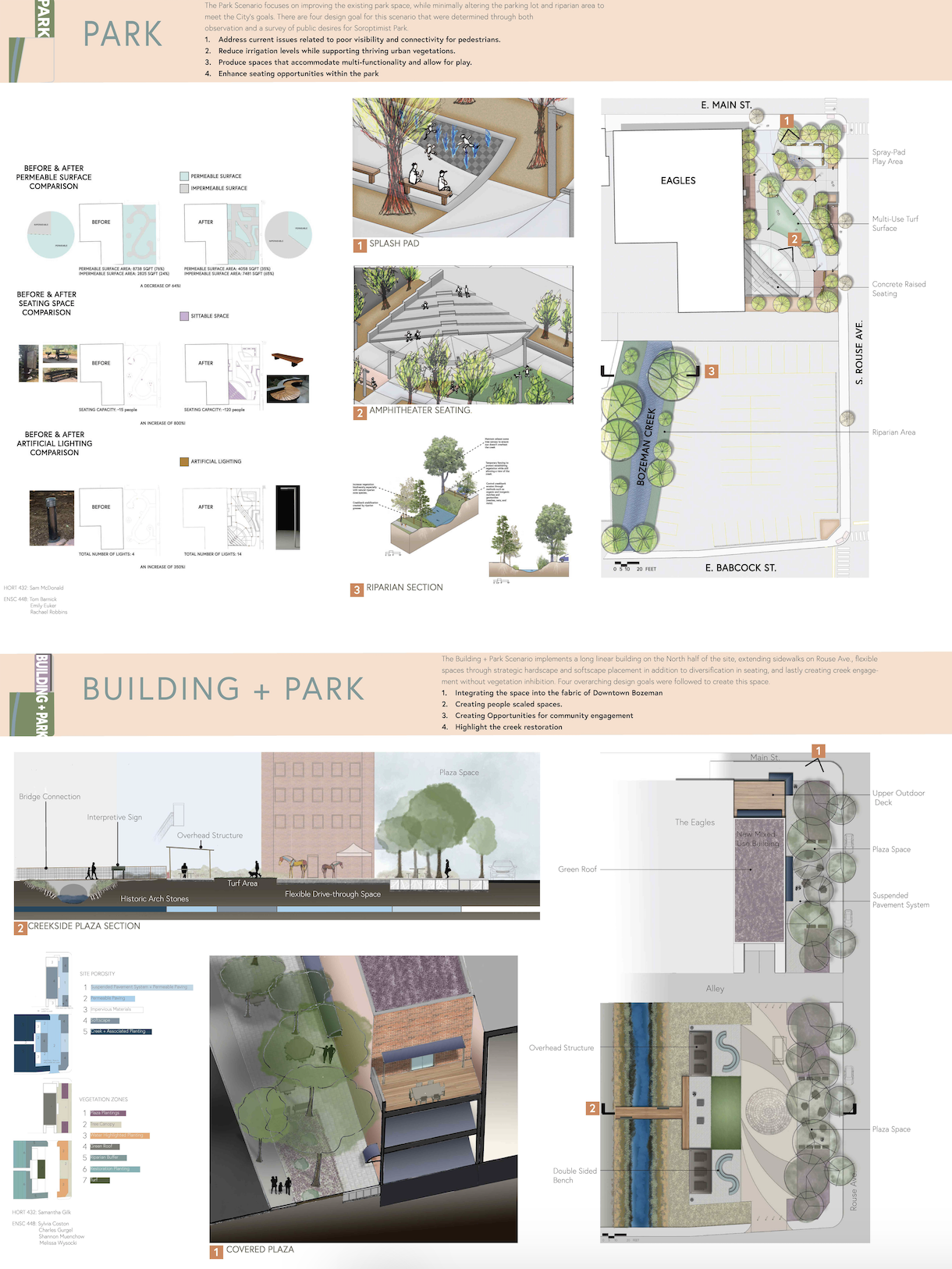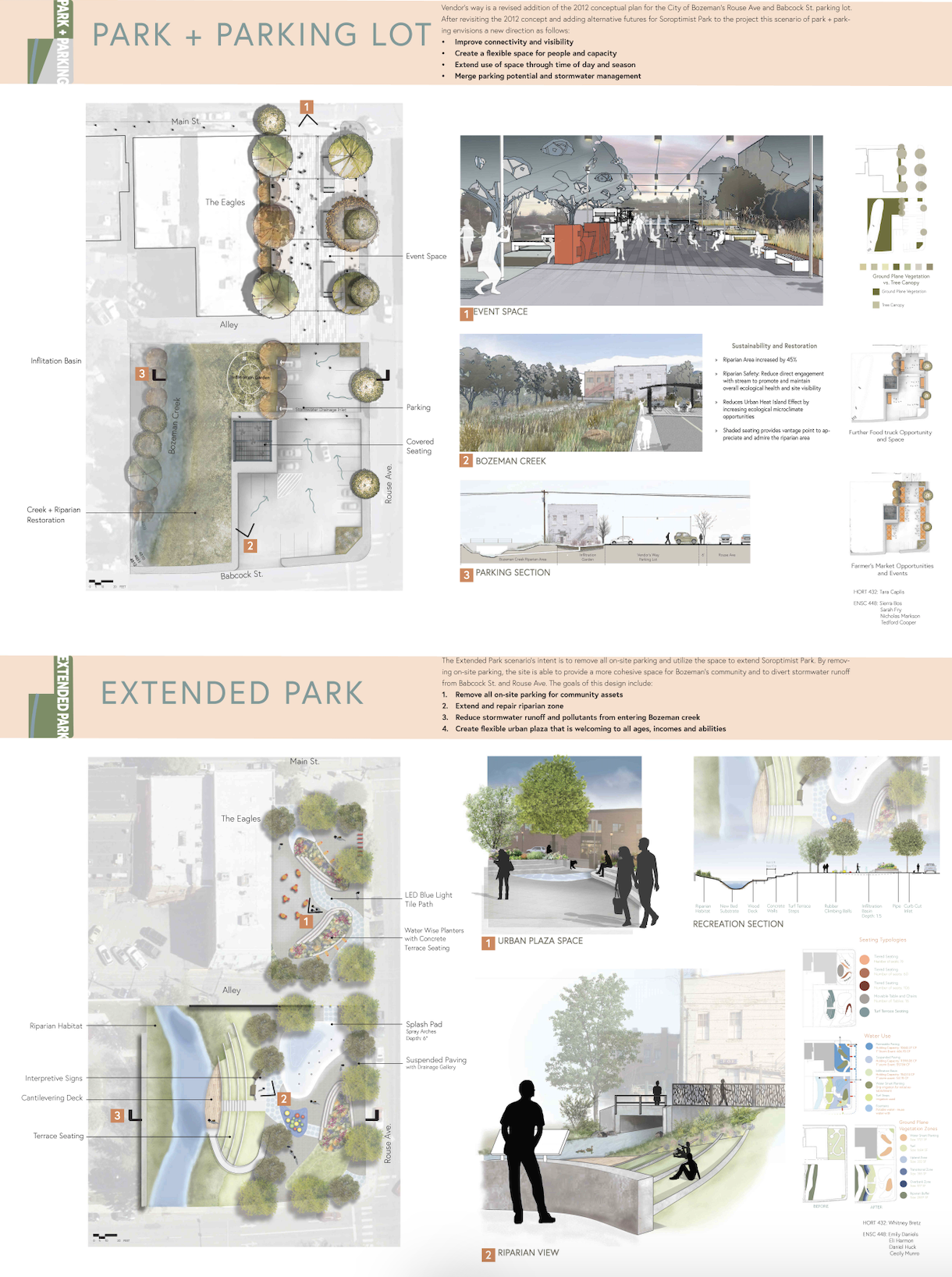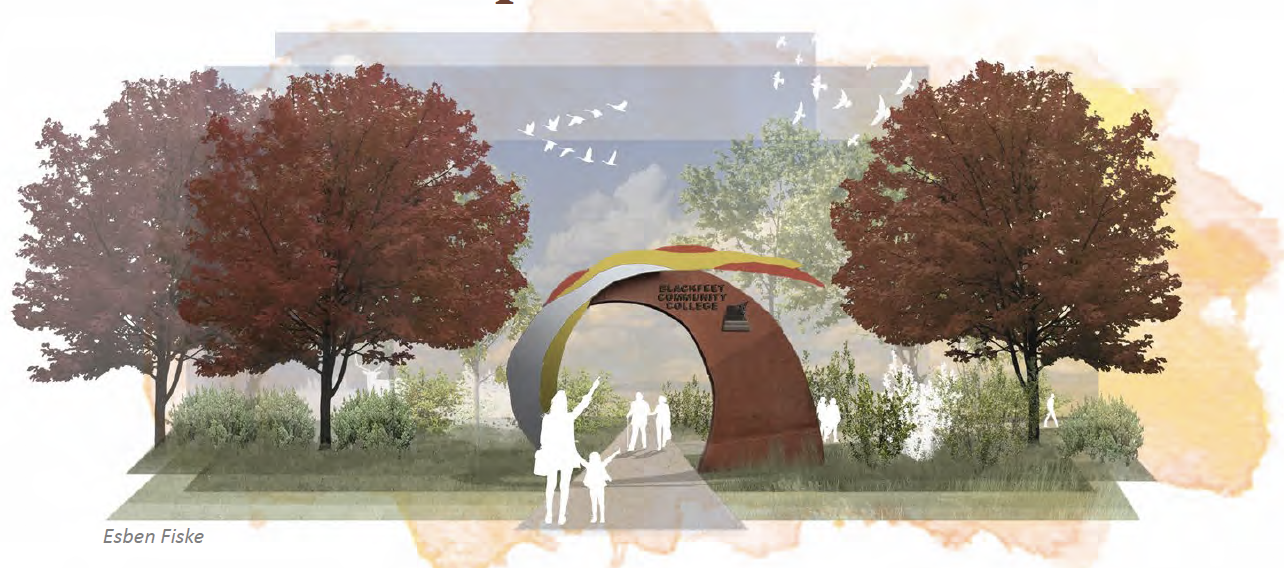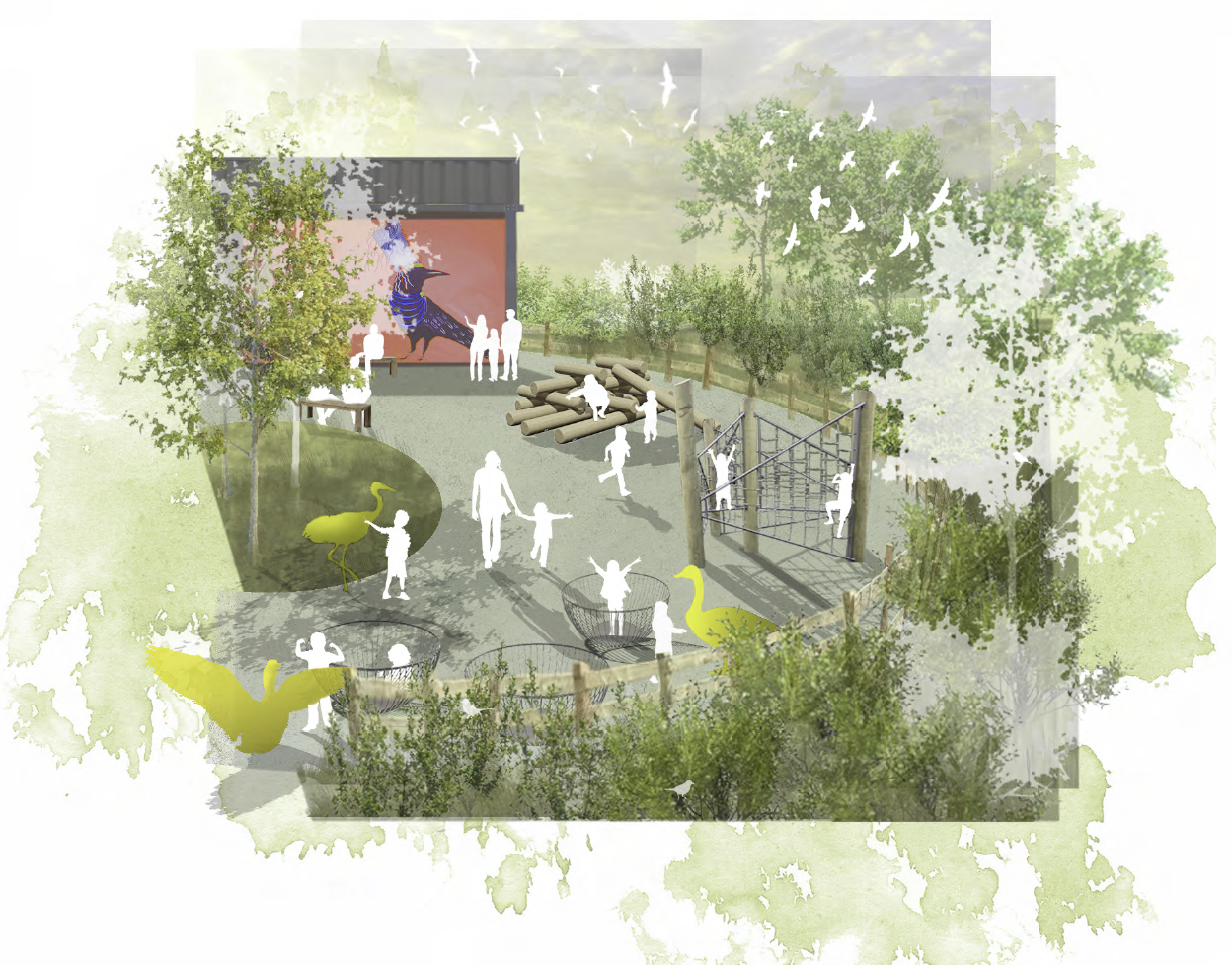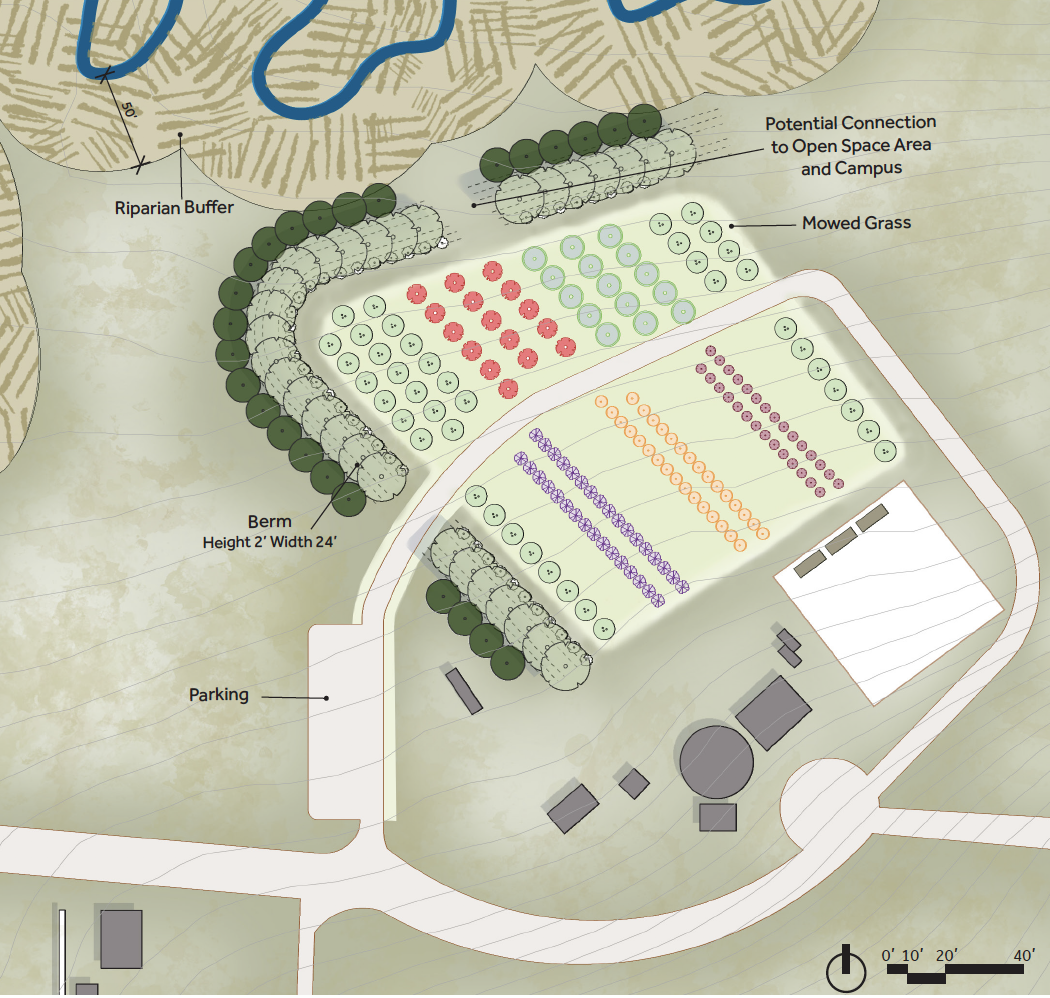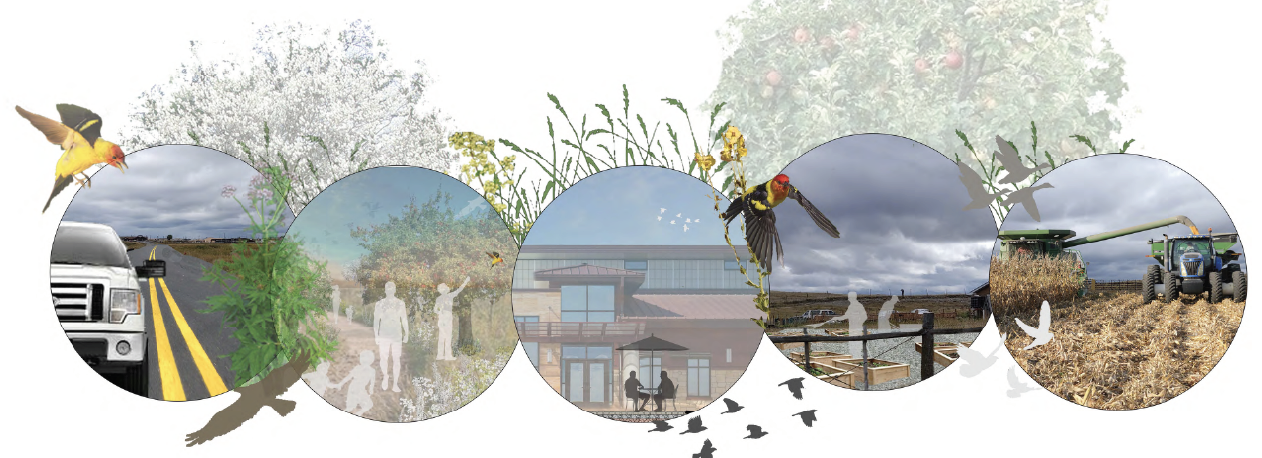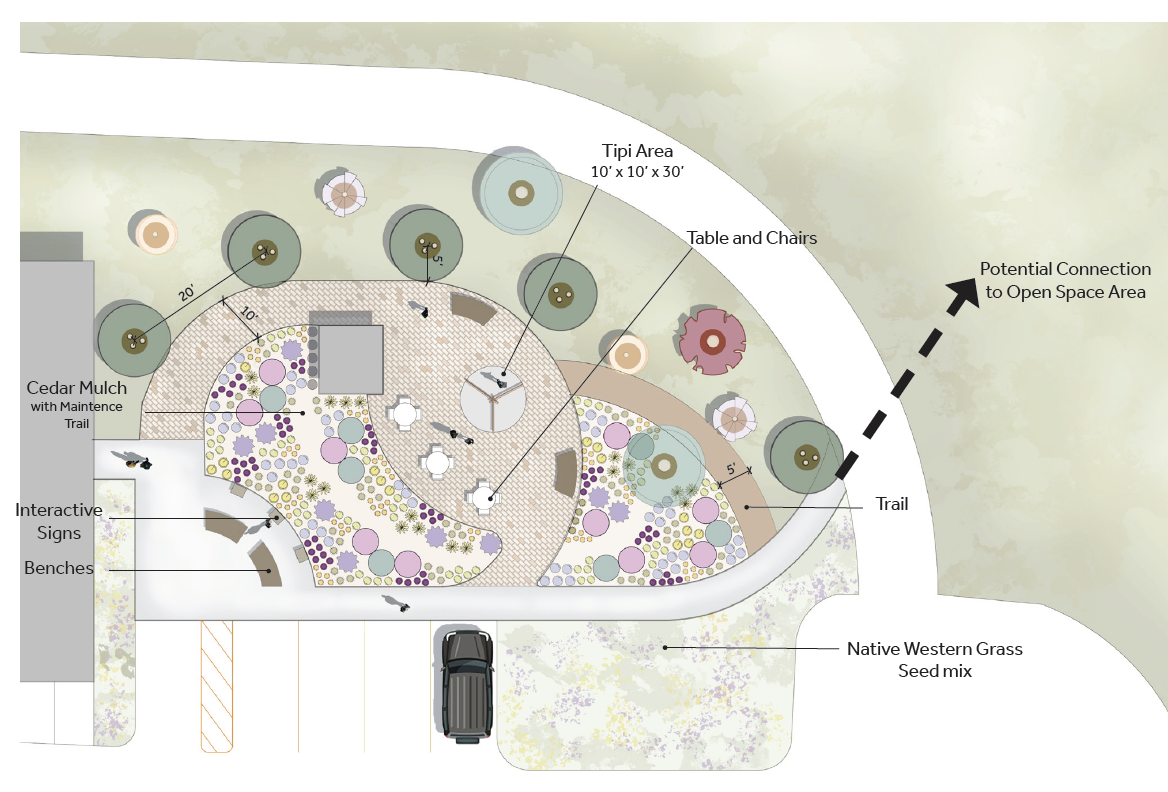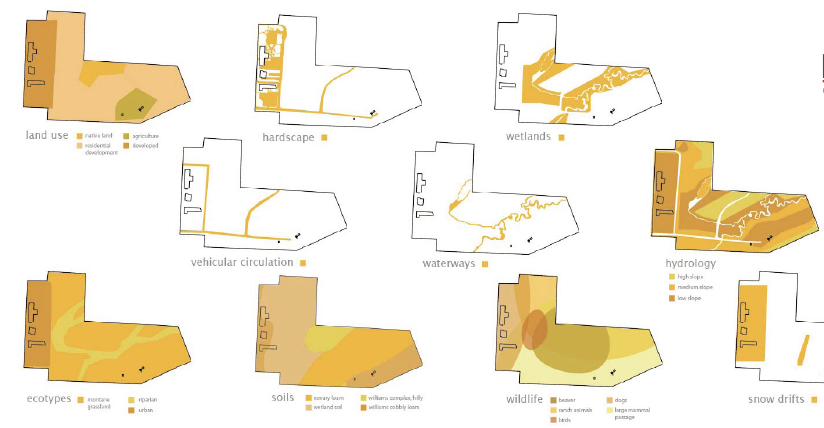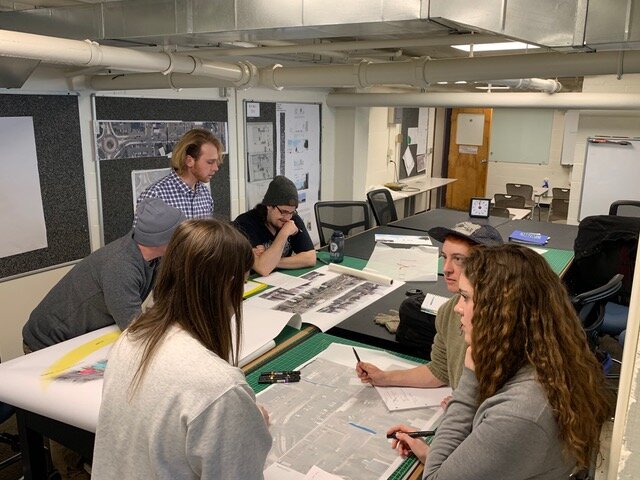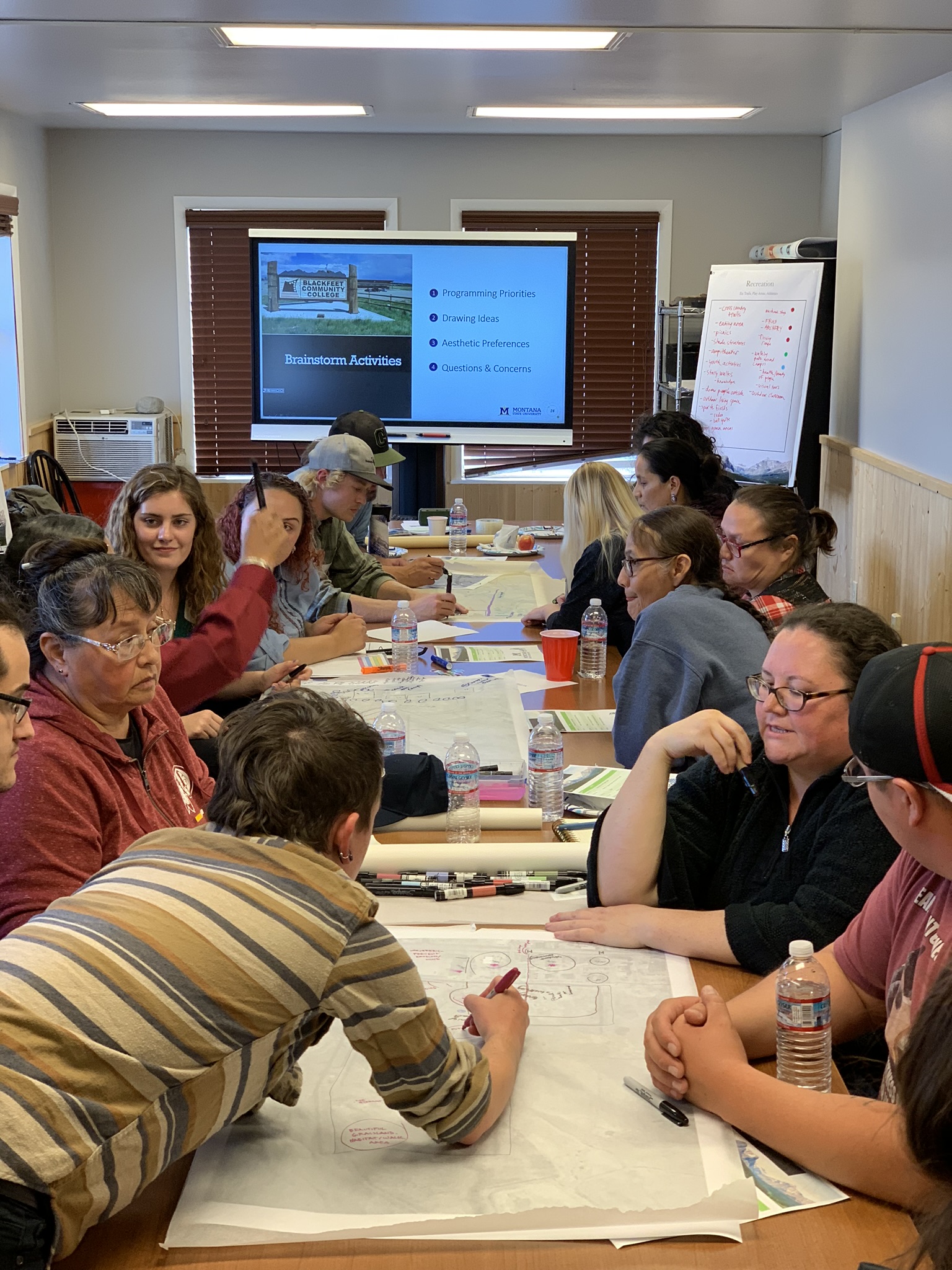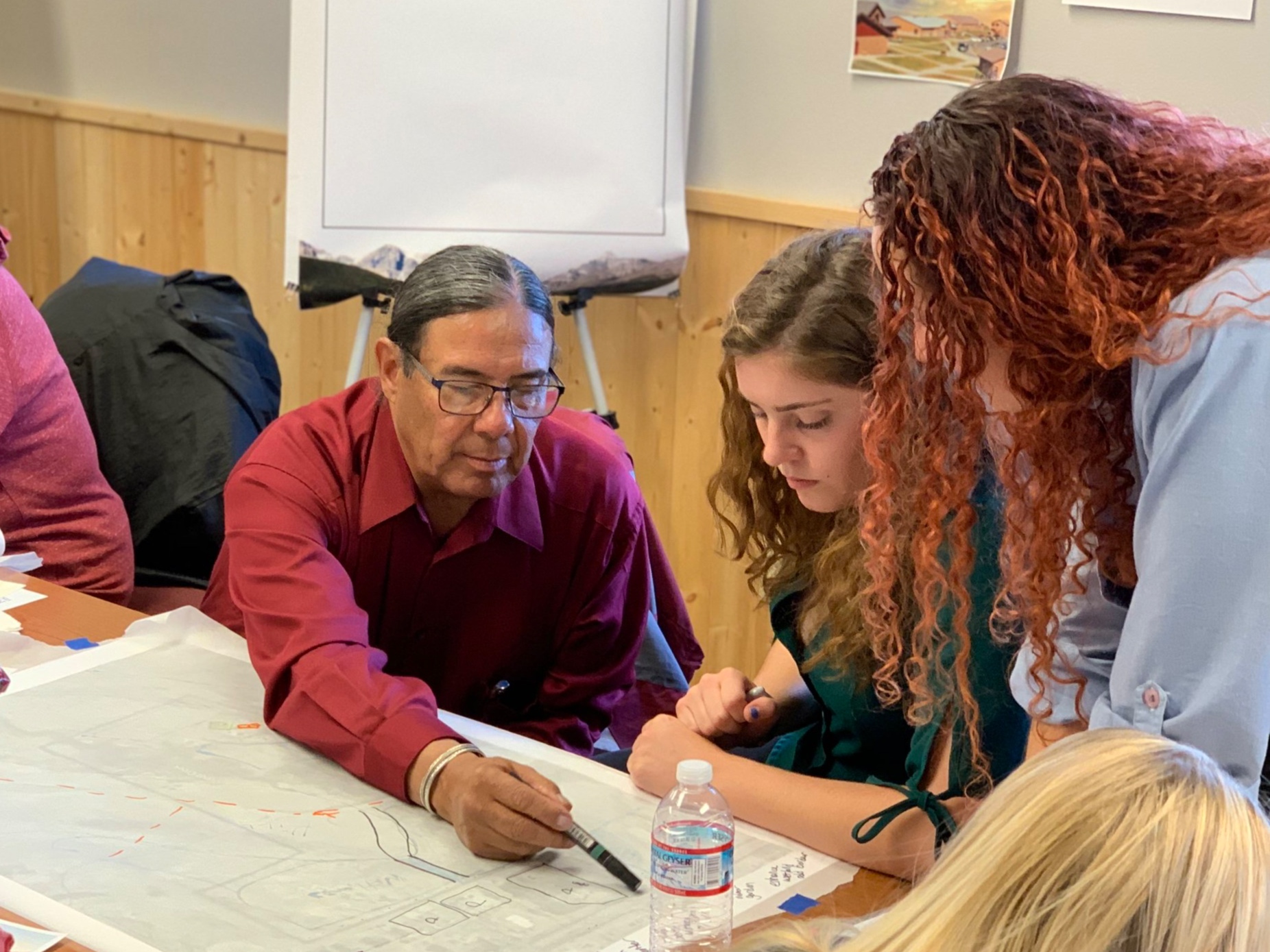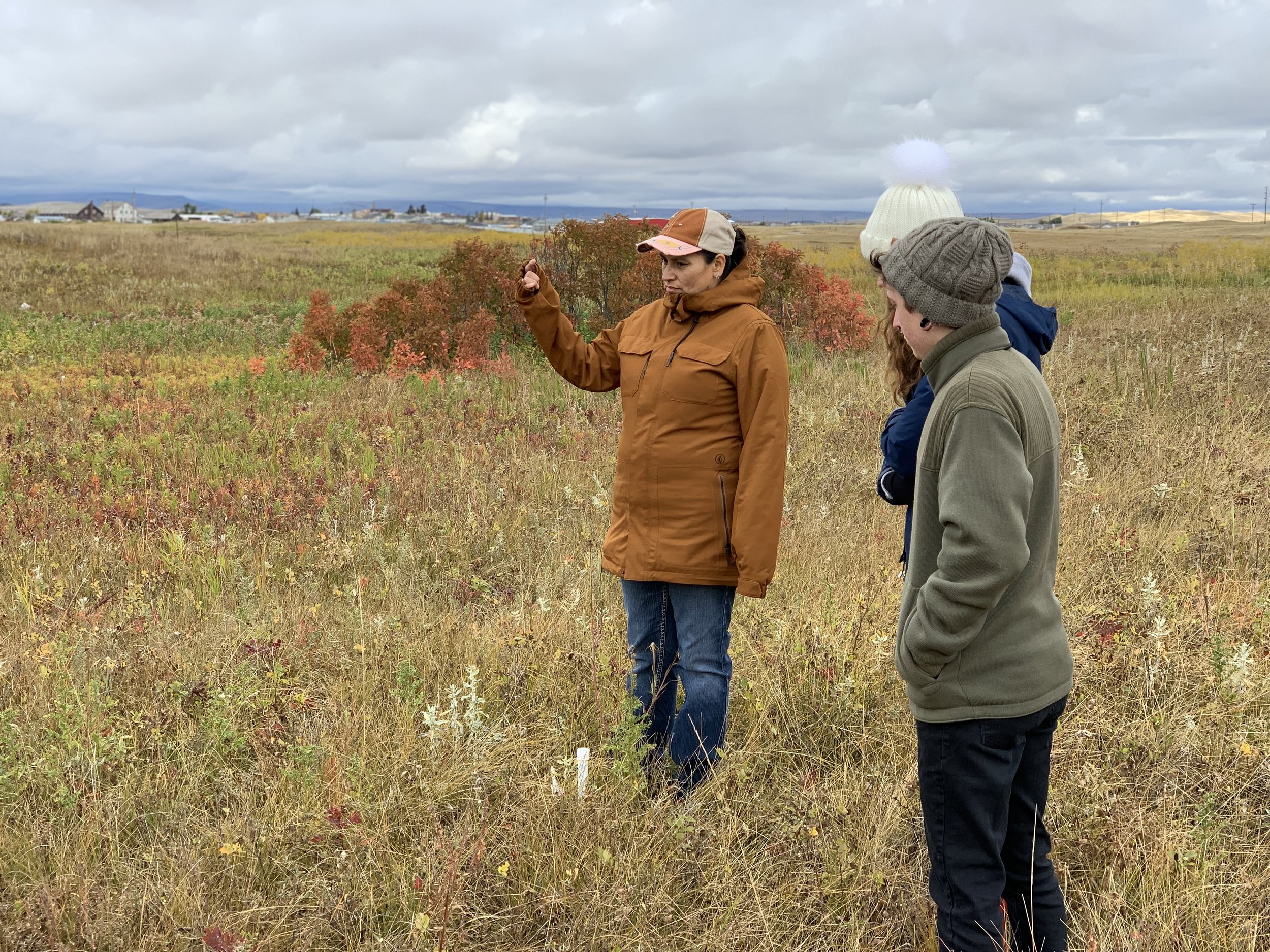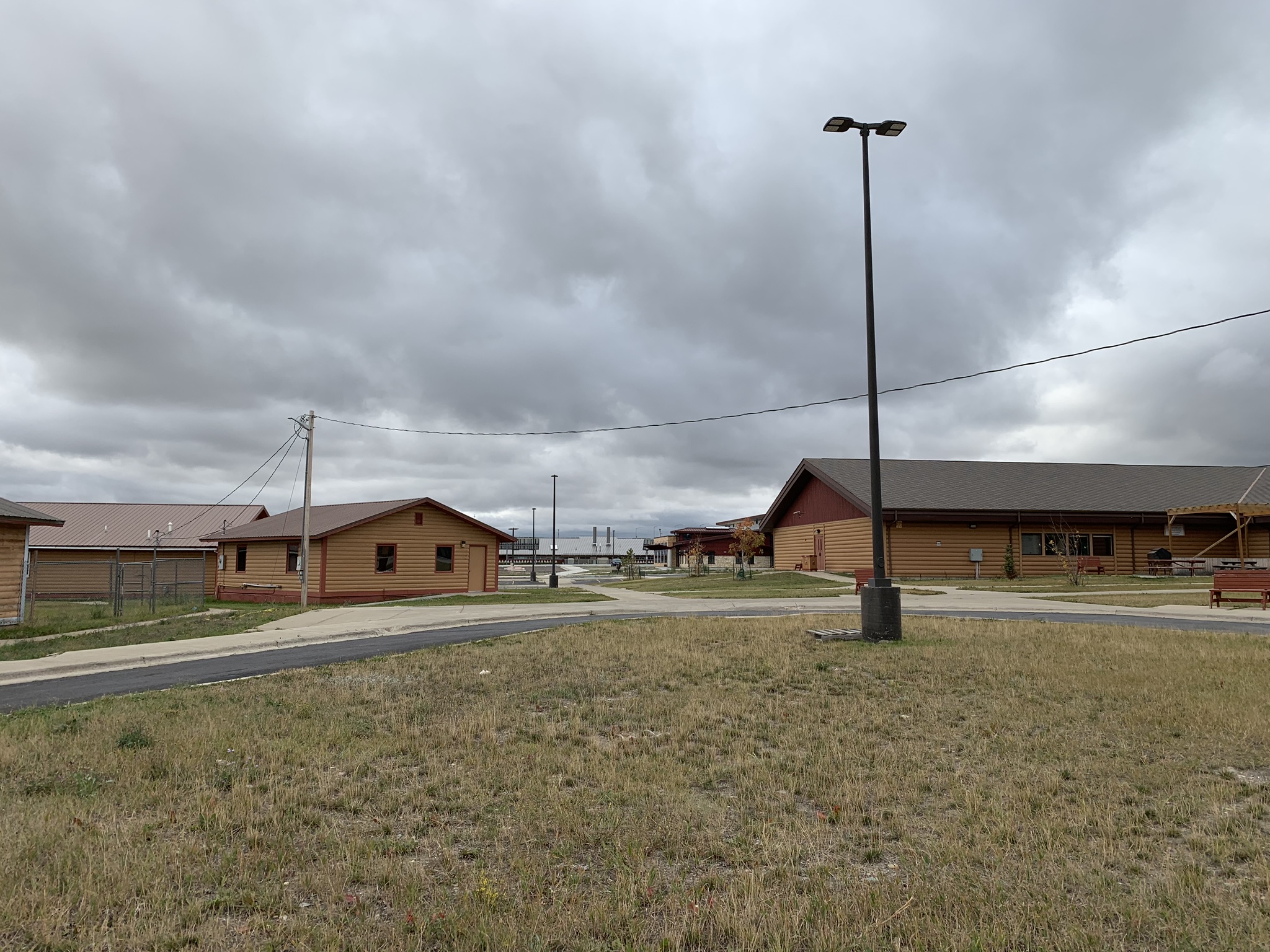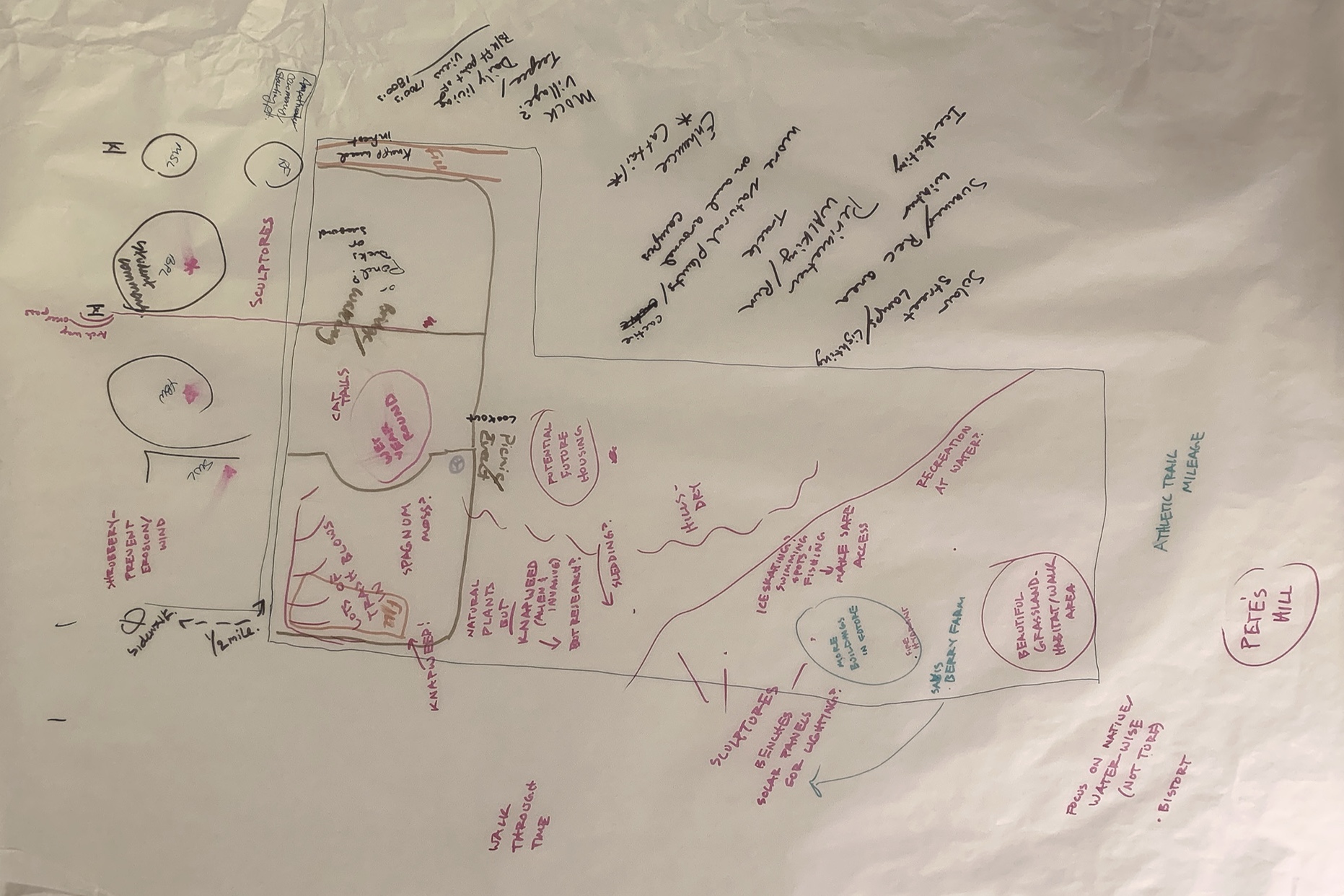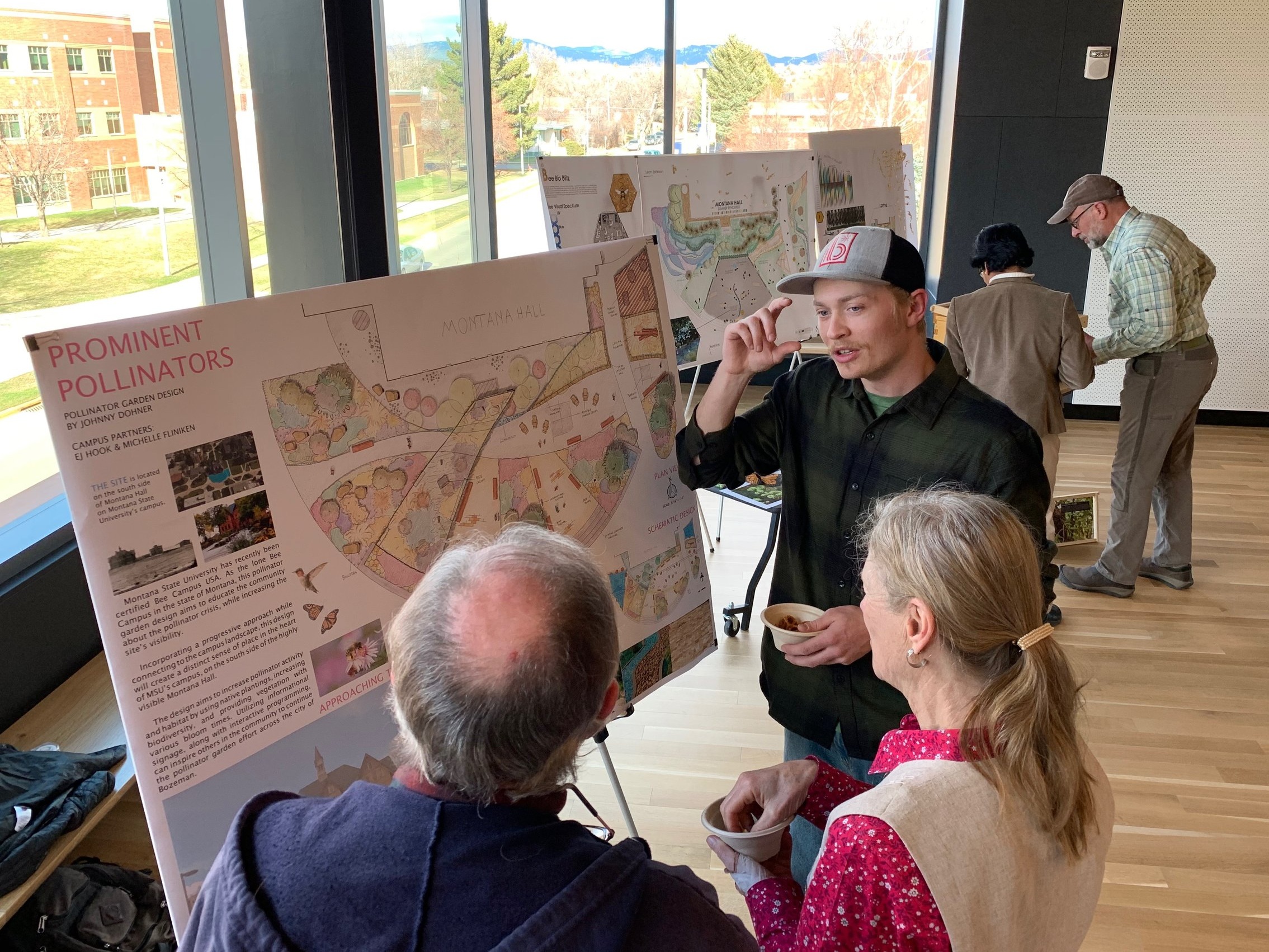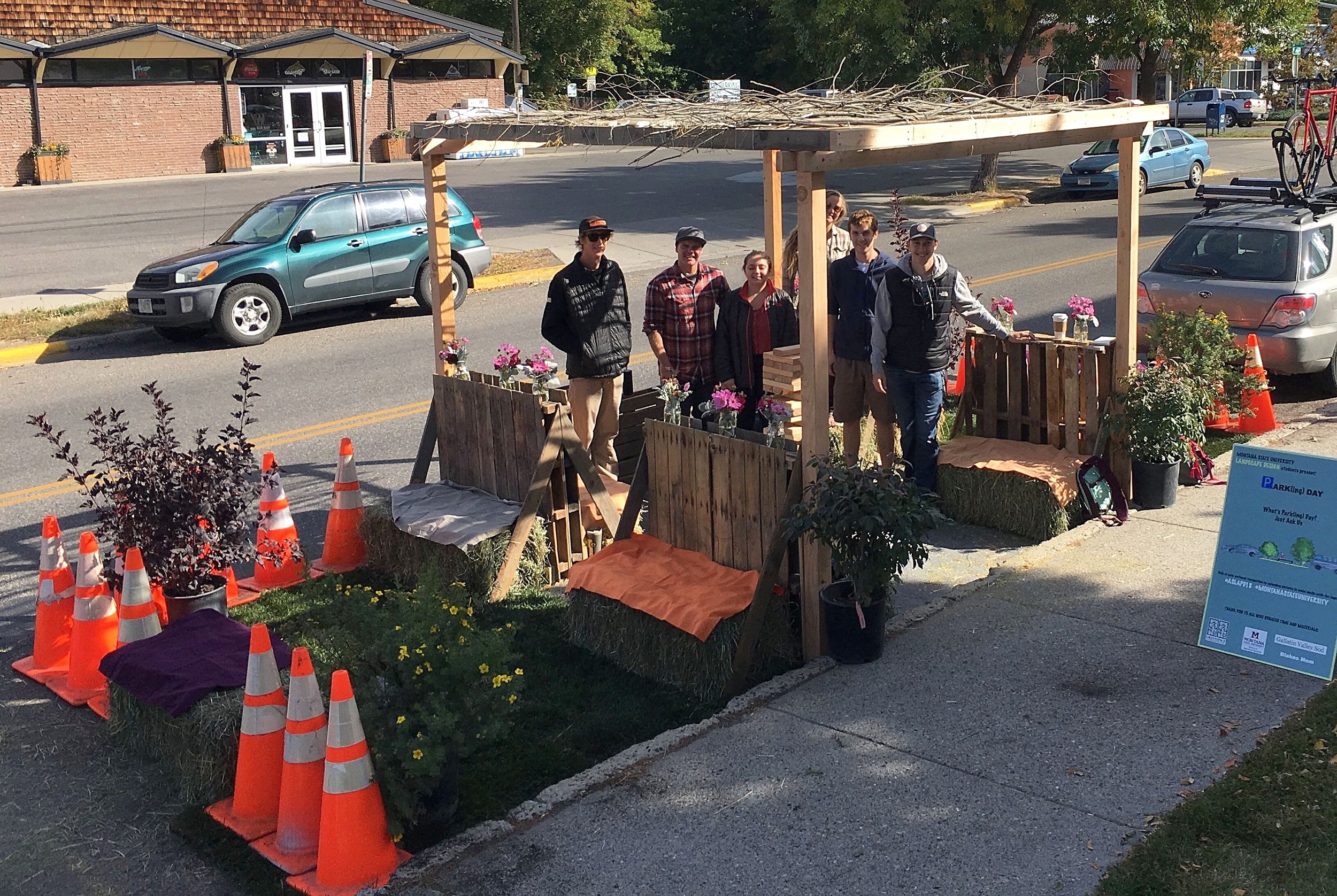We did it! Collaborative service-learning in the midst of a pandemic! During the Fall 2020 semester my HORT 432 studio students and I collaborated with Dr. Geoffrey Poole, T.A. Libby Morh and his ENSC 448 Stream Restoration Ecology course. We worked with the Downtown Bozeman Partnership investigating alternative futures for Soroptimist Park, the Rouse St. Public Parking Log, and Bozeman Creek. The project was initiated through the CATS program at Western Transportation Institute. Student teams across courses put in significant energy to collaborate and learn from one another and I am so proud of their work. Students also had the incredible opportunity to learn through feedback from three practicing professionals who had worked on past conceptual design ideas for the parking lot and creek. VoiceThread proved to be a useful tool for pulling together input on visual/spatial content and oral presentations, and I highly recommend it.
Interested in the details? Check out the finished report on the CATS website under our Fall 2020 course.
A huge thank you to our amazing project partners (Chris Naumann, Emily Cope, Susan Gallagher) and professional mentors (Troy Scherer - Design 5 Landscape Architecture, Rob Pertzborn - Intrinsik Architecture, Jim Lovell - Confluence Inc.)!!

